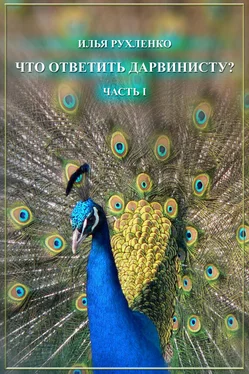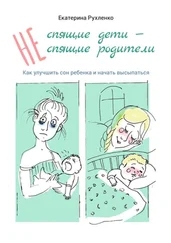Nilsson D.-E., Gislén L., Coates M.M., Skogh C., Garm A. Advanced optics in a jellyfish eye // Nature. 2005. V. 435. P. 201–205.
Olofsson M., Jakobsson S., Wiklund C. (b) Bird attacks on a butterfly with marginal eyespots and the role of prey concealment against the background // Biological Journal of the Linnean Society. 2013. V. 109. P. 290–297.
Olofsson M., Lovlie H., Tibblin J., Jakobsson S., Wiklund C. (a) Eyespot display in the peacock butterfly triggers antipredator behaviors in naïve adult fowl // Behavioral Ecology. 2013. V. 24. P. 305–310.
Olofsson M., Vallin A., Jakobsson S., Wiklund C. Marginal eyespots on butterfly wings deflect bird attacks under low light intensities with UV wavelengths // PLoS ONE. 2010. V. 5. P. e10798.
Paley W. Natural Theology: or, Evidences of the Existence and Attributes of the Deity. J. Faulder, London, 1802.
Parker J., Tsagkogeorga G., Cotton J.A., Liu Y., Provero P., Stupka E., Rossiter S.J. Genome-wide signatures of convergent evolution in echolocating mammals // Nature. 2013. V. 502, P. 228–231.
Poelstra J.W., Vijay N., Bossu C.M., Lantz H., Ryll B., Muller I., Baglione V., Unneberg P., Wikelski M., Grabherr M.G. Wolf B.W. The genomic landscape underlying phenotypic integrity in the face of gene flow in crows // Science. 2014. V. 344. P. 1410–1414.
Pough F.H., Brower L.P. Predation by birds on great southern white butterflies as a function of palatability, sex, and habitat // American Midland Naturalist. 1977. V. 98. № 1. P. 50–58.
Prudic K.L., Jeon C., Cao H., Monteiro A. Developmental plasticity in sexual roles explains mutual sexual ornamentation // Science. 2011. V. 331. P. 73–75.
Quint M., Drost H.-G., Gabel A., Ullrich K.K., Bonn M., Grosse I. A transcriptomic hourglass in plant embryogenesis // Nature. 2012. V. 490. P. 98–101.
Richardson M., Hanken J., Gooneratne M., Pieau C., Paynaud A., Selwood L., Wright G. There is no highly conserved embryonic state n the vertebrates: implications for current theories of evolution and development. // Anat Embryol. 1997. V. 196. P. 91–106.
Richardson M.K., Keuck G. Haeckel’s ABC of evolution and development // Biol. Rev. 2002. V. 77. P. 495–528.
Rivera M.C., Lake J.A. The ring of life provides evidence for a genome fusion origin of eukaryotes // Nature. 2004. V. 431. P. 152–155.
Robertson K.A., Monteiro A. Female Bicyclus anynana butterflies choose males on the basis of their dorsal UV-reflective eyespot pupils // Proc. R. Soc. B. 2005. V. 272. P. 1541–1546.
Rodriguez-Trelles F., Tarrio R., Ayala F.J. Erratic overdispersion of three molecular clocks: GPDH, SOD, and XDH // PNAS. 2001. V. 98. № 20. P. 11405-11410.
Rothschild M. Is the buff ermine (Spilosoma lutea (Huf.)) a mimic of the white ermine (Spilosoma lubricipeda (L.))? // Proc. Royal Entomol. Soc. London. 1983. V. 38. P. 159–164.
Roughgarden J., Akcay E. Do we need a Sexual Selection 2.0? // Animal behaviour. 2010. V. 79. P. e1-e4.
Rudd S. The piltdown moth. Взято 22.02.2015 с http://www.bible.ca/tracks/textbook-fraud-pepper-moth-biston-betularia.htm
Ruell E.W., Handelsman C.A., Hawkins C.L., Sofaer H.R. Ghalambor C.K., Angeloni L. Fear, food and sexual ornamentation: plasticity of colour development in Trinidadian guppies // Proc. R. Soc. B. 2013. V. 280. P. 2012–2019.
San Martin G., Bacquet P., Nieberding C.M. Mate choice and sexual selection in a model butterfly species, Bicyclus anymana: state of the art // Proc. Neth. Entomol. Soc. Meet. 2011. V. 22. P. 9–22.
Sanford J.C., Baumgardner J., Brewer W., Gibson P., ReMine W.
(a) Mendel's Accountant: a biologically realistic forward-time population genetics program // SCPE. 2007. V. 8. P. 147–165.
Sanford J.C., Baumgardner J., Brewer W., Gibson P., ReMine, W.
(b) Using computer simulation to understand mutation accumulation dynamics and genetic load. / In: Computational Science – ICCS 2007. Ed. by Shi et al. LNCS, Springer-Verlag, Berlin, Heidelberg, 2007. V. 4488. P. 386–392.
Sargent T.D. On the relative acceptabilities of local butterflies and moths to local birds // Journal of the Lepidopterists’ Society. 1995. V. 49. № 2. P. 148–162.
Scott M.P. Intimations of a Creature // Cell. 1994. V. 79. P. 1121–1124.
shCherbak V.I., Makukov M.A. The “Wow! signal” of the terrestrial genetic code // Icarus. 2013. V. 224. P. 228–242.
Smith H.R., Lautenschlager R.A. Gypsy moth predators. / In: The gypsy moth: research toward integrated pest management. Ed. by Doane C.C., McManus M.L. Technical Bulletin 1584, Forest Service, US Department of Agriculture, Washington, 1981. P. 96–125.
Smith H.R., Lautenschlager R.A. Predators of the Gypsy Moth / Gypsy moth handbook. Combined Forest Pest Research and Development Program. Agriculture Handbook № 534. U.S.D.A. 1978. 72 p.
Smith P.D. Darwinism in a flutter: did a moth show evolution in action? The Guardian, May 11, 2002.
Sourakov A. Two heads are better than one: false head allows Calycopis cecrops (Lycaenidae) to escape predation by a Jumping Spider, Phidippus pulcherrimus (Salticidae) // Journal of Natural History. 2013. V. 47. № 15–16. P. 1047–1054.
Stenico M., Lloyd A.T., Sharp P.M. Codon usage in Caenorhabditis elegans: delineation of translational selection and mutational biases // Nucleic Acids Res. 1994. V. 22. P. 2437–2446.
Stevens M., Graham J., Winney I.S., Cantor A. (c) Testing Thayer’s hypothesis: can camouflage work by distraction? // Biol Lett. 2008. V. 4. P. 648–650.
Stevens M., Hardman C.J., Stubbins C.L. (а) Conspicuousness, not eye mimicry, makes «eyespots» effective antipredator signals // Behav Ecol. 2008. V. 19. P. 525–531.
Stevens M., Marshall K.L.A., Troscianko J., Finlay S., Burnand D., Chadwick S.L. Revealed by conspicuousness: distractive markings reduce camouflage // Behavioral Ecology. 2013. V. 24. P. 213–222.
Stevens M., Merilaita S. Animal camouflage: current issues and new perspectives // Philos Trans R Soc B Biol Sci. 2009. V. 364. P. 423–427.
Stevens M., Stubbins C., Hardman C.J. (b) The anti-predator function of «eyespots» on camouflaged and conspicuous prey // Behav Ecol Sociobiol. 2008. V. 62. P. 1787–1793.
Steward R.C. Industrial and non-industrial melanism in the peppered moth Biston betularia (L.) // Ecol. Entomol. 1977. V. 2. P. 231–243.
Stobbe N., Schaefer H.M. Enhancement of chromatic contrast increases predation risk for striped butterflies // Proc. R. Soc. B. 2008. V. 275. P. 1535–1541.
Suga H., Tschopp P., Graziussi D.F., Stierwald M., Schmid V., Gehring W. Flexibly deployed Pax genes in eye development at the early evolution of animals demonstrated by studies on a hydrozoan jellyfish // PNAS. 2010. V. 107. P. 14263-14268.
Syriatowicz A., Brooks R. Sexual responsiveness is condition-depended in female guppies, but preference functions are not // BMC Ecology. 2004. V. 4. P. 5.
Takahashi M., Arita H., Hiraiwa-Hasegawa M., Hasegawa T. Peahens do not prefer peacocks with more elaborate trains // Animal Behaviour. 2008. V. 75. P. 1209–1219.
Turner А.Н., Pol D., Clarke J.A., Erickson G.M., Norell M.A. Basal dromaeosaurid and size evolution preceding avian flight // Science . 2007. V. 317. P. 1378–1381.
Vallin A., Dimitrova M., Kodandaramaiah U., Merilaita S. Deflective effect and the effect of prey detectability on anti-predator function of eyespots // Behavioral Ecology and Sociobiology. 2011. V. 65. P. 1629–1636.
Читать дальше
Конец ознакомительного отрывка
Купить книгу











